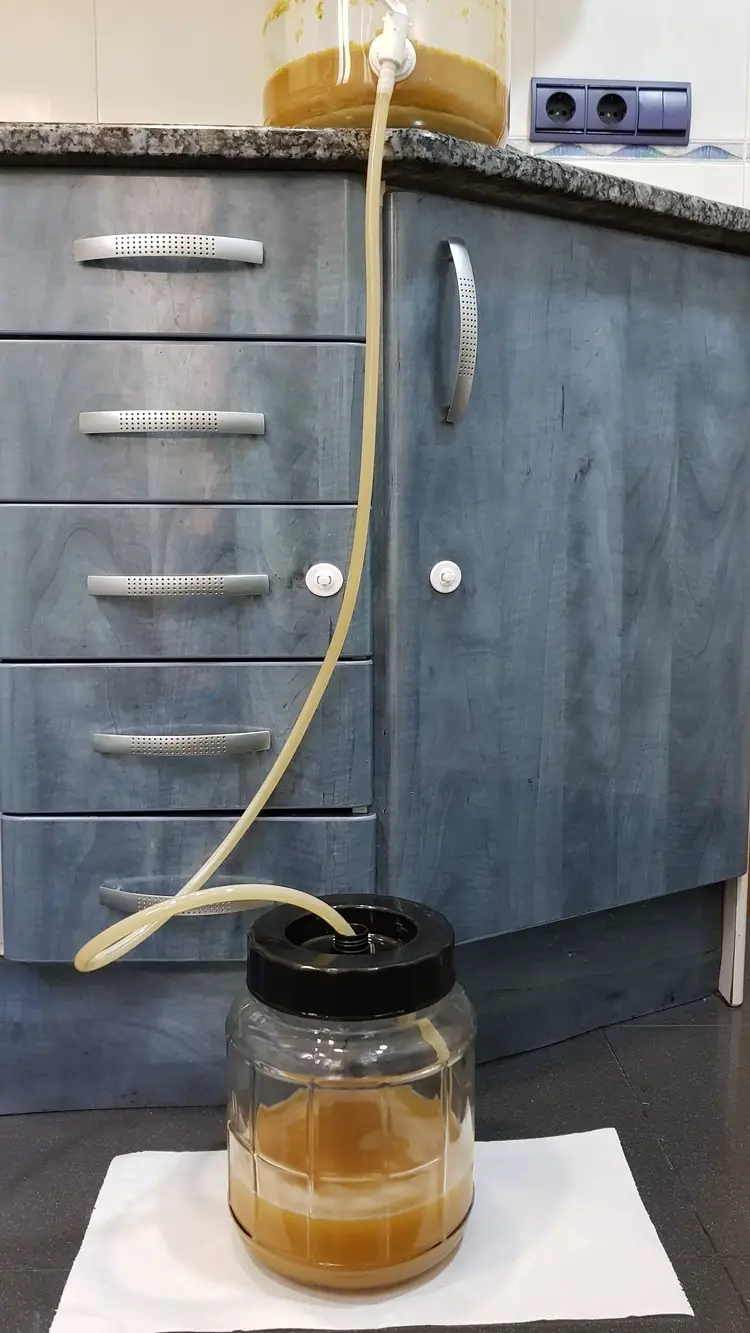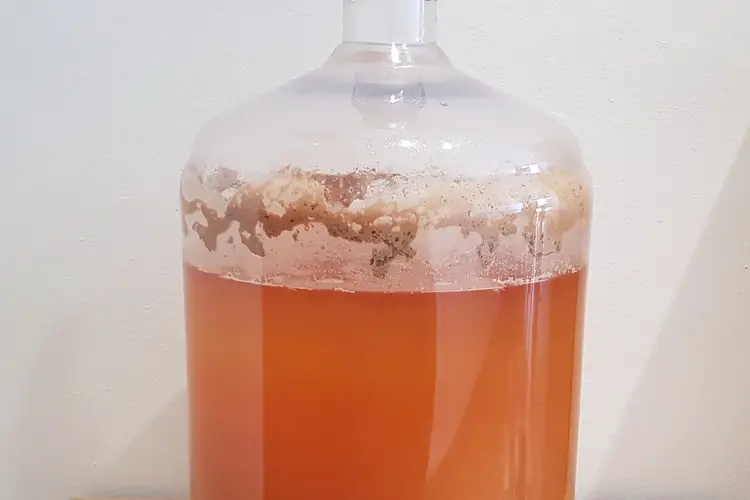It’s often asked among brewers at home and in the brewhouse, is secondary fermentation worth the time and effort. Having been a professional brewer for more than 10 years, I’m here to put that debate to rest. Yes, it is.
Secondary fermentation is a vital and necessary component of brewing. For home brewers, it is indispensable. It allows beer to fully attenuate and for yeast to complete its metabolic process, namely creating alcohol and absorbing off-flavors; also known as conditioning.
Following I will look closely at several factors and the brewer may decide for themselves.
In my humble opinion, it’s no contest.
Does Secondary Fermentation Temperature Matter?
Fermentation temperature always matters.
Each yeast, at least speaking of pure ale or lager strains, have precise temperatures wherein they perform optimally.
For ales it is 60 – 68° F (15 – 20° C), and for lagers it’s 40 – 53˚ F (4 – 11° C).
Ales in Secondary Fermentation
True enough, ale yeast does most of its heavy lifting within 3 – 5 days. Attenuation (the rate at which sugar converts to Alcohol) is often at 60 – 70% within this time frame. Fresh wort has effectively transformed into raw beer.
I say raw as the beer in this state as it is still extremely cloudy and will be extremely rough around the edges if not outright unpleasant to taste.
I always recommend racking the beer into a glass carboy and patience permitting, allow it to sit for 2 weeks.
Given time, it reabsorbs any off flavors, completes its final 5 – 10 % of attenuation and naturally clarifies.
I couldn’t be clearer on the benefits.
The main off-flavor you will avoid is diacetyl. This is a buttery, butterscotch flavored compound natural to the fermentation process.
The beer must rest on the yeast for 1 – 2 weeks to give time to fully reabsorb it.

Lagers in Secondary Fermentation
I will only briefly discuss lagers as they by definition are aged beer wherein secondary fermentation is an integral part of their maturation.
One aspect of a young lager, 3 weeks old for example, is a green apple flavor due to ester formation. Esters are a natural aromatic compound, in modest amounts enhancing ale enjoyment but have no place in lager brewing.
This extra time, 2 – 3 weeks in secondary fermentation will assure that the flavors are reabsorbed and imperceptible to the nose.
This applies to ales as well, which often have high ester formation due to warm fermentation temps.
Additionally, lagers also need to go through a diacetyl rest. In this case for example. The lager finishes primary at 45˚ F (7 ° C) and is allowed to raise back up to 52 – 54˚ F (12° C), to assure a proper diacetyl rest (the reabsorption of this undesirable flavor).
I discuss primary and secondary fermentation at length in the article, Primary and Secondary Fermentation in Beer: What’s the Difference?
Pros and Cons of Secondary Fermentation
| Pros | Cons |
| Fermentation reaches full cycle | Brewer waits 2 -3 weeks longer |
| Beer is lifted off of trub, hops, and dead yeast | Heavily hopped beers could degrade – highly unlikely as hop degradation occurs after some months |
| Better clarification | Dissolved O2 has more time to affect the beer – again, only after months, not weeks |
| Only healthy yeast cells make it into the bottle | Small infection may become worse – some beers can handle a small infection if drunk quickly. This does point to larger issues |
| Off-Flavors reabsorbed – diacetyl, excess esters, phenols, Isoamyl Acetate – banana | If overdone, some ales could become stale |
| Some Ale style benefit from it: Belgian, Barley Wine, Imperials – beers which must have 4-8 weeks to properly mature | More vulnerable to extreme temperature changes |
| May drink straight from the bottle – bottle sediment is perhaps 1mm in properly racked beer | More time to clean and sanitize equipment for racking. |
| Minimizes oxidation risk – oxidation is more of a risk when yeast is highly active |
Can the Secondary Fermentation Be Done in Bottles?
Yes, I suppose it could. The beer may not fully attenuate, can still be tasty but a little sweet. There could be a lot of yeast in the bottle, instead of a millimeter or so. I often drank my homebrews from the bottle with little concern for excessive slurry.
Yeast, while healthy and full of complex B vitamins, is bitter to the taste. If beer is racked straight from the primary fermenter into bottles, the yeast could dominate the flavor and detrimentally off-set the malt and hop balance.
Belgian beer can enhance flavor but yeast itself is quite bitter.
Finally, if the beer is under-attenuated, the additional priming sugar could burst bottles.
Can ABV Increase in Secondary Fermentation?
It certainly does. As stated many times over, primary fermentation for ales is done in 3 – 5 days, 7 at the outside. Even so, the beer is 60 – 70% attenuated. And this may be fine and the desired result.
Make no mistake, the yeast is still working, and will finish the last 5% of fermentation in secondary. For example, an American Pale ale could begin at 1.050 OG. Many like a hearty Pale. It will complete primary at about 1.014 – 1.016.
Pale Ales are often mashed in the 149 – 152˚ F (65 – 66° C) range. This indicates they could have a lower terminal gravity. After 1 – 2 weeks in secondary, the terminal gravity could be as low as 1.010 – 1.012.
It should have a sharp hop profile, a little perceptible heat from the fusel (alcohol bitterness) element in the alcohol and be a bit dry.
If bottled early, it may not have the time to finish its cycle.
Why Use a Carboy for Secondary Fermentation?
Many of these fermentation vessels, new and old, are made of plastic.
Plastic does allow O2 to penetrate its walls. Many plastic fermenters are oversize, do not employ a blow-off method for fermentation, and hold a large amount of headspace.
There is O2 in your fermenter. Once the yeast begins working in earnest, it becomes anaerobic and O2 is the enemy. To be fair, the rapid production of CO2 pushes the air out, but the risk exists.
Glass is impermeable to O2 and more often than not creates minimal head space.
It all but eliminates the risk of oxidation during fermentation. For a thorough discussion on the joys of oxidation, please see When Does Oxidation Occur in Beer and How to Avoid it.
There are many fancy contraptions these days for fermenting, some of them novel and amazingly effective. They in essence mimic commercial brewing and make advanced techniques manageable for beginning brewers.
Finally, some of these all-in-one fermenter/ conditioning / bottling / serving vessels while effective and fun to use have many fittings and parts, whether plastic, brass, or steel. Due to human nature, they may not be broken down nor properly cleaned each time used. It takes one single uncleaned fitting to infect all of the beer.
No products found.
Commercial Brewing, How It Differs
We have all been to brewpubs and had excellent ales that were 10 – 12 days old. Or talked to a brewer that ages in ten, packages, and the beer matures en route to the warehouse, bar, or retail shop. All of this is true and in most cases the beer is fine, and one is hard pressed to find fault with it.
All I really want to make clear is that a commercial environment is artificially controlled. All vessels are closed from open atmosphere, live under CO2, and usually filtered for clarity. The brewing process is truncated and sped up with the aid of tech.
Would that same 10-day ale be better after 20 days? I think so. Does a lager need 42 days – minimum – for the magic to happen? Absolutely, yet I kegged mine after 35 days, due to commercial demand.
Terminal gravity reached
I’ve laid out the pros and cons. Equipment considerations can determine our process.
In the end, the yeast needs time to work, metabolize, and rest.
My experience, home and professional, tells me 2 – 3 weeks for ales and 7 – 12 weeks for lager is the time our little yeast buddies need time to fulfill their reason for being, transformation, growth, and rest.
Last update on 2024-03-28 / Affiliate links / Images from Amazon Product Advertising API

